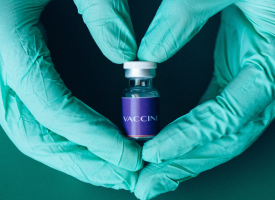Dr Tony Bartone - ABC News Radio Breakfast - Coronavirus social distancing restrictions
Transcript: AMA President, Dr Tony Bartone, ABC News Radio Breakfast, Friday, 1 May 2020
Subject: Coronavirus social distancing restrictions
MANDY PRESLAND: New South Wales and the Northern Territory have become the first places to start easing coronavirus social distancing restrictions today. Groups of two adults plus children are now allowed to visit other households in New South Wales. From midday in the Northern Territory, people will be able to use public swimming pools, water parks, go fishing with friends, and play golf. And in Queensland, from midnight, residents will be allowed to travel 50 kilometres from their home for recreation and go shopping for non-essential purposes, while picnics and bushwalks will also be allowed.
Dr Tony Bartone is the President of the Australian Medical Association, and he joins us now. Good morning to you, Doctor.
TONY BARTONE: Good morning, Mandy.
MANDY PRESLAND: Do you think now is a good time to start easing some restrictions? Or in your mind is it still too soon?
TONY BARTONE: This is a question that's going to be on the top of everyone's agenda at the moment, including the National Cabinet that is meeting today. It's important to remember where we've come from, and what we've achieved in comparison to the rest of the world. I mean, look at the evidence from other parts of the world that have started to relieve or release lockdown measures, and indeed where those measures have been premature. And there is a situation that’s occurred, if we look at places like Singapore, where we've had a second wave.
Whatever the approach, it's got to be guided by evidence; it has got to be guided by understanding that a second wave could quite easily occur if small outbreaks, are not addressed. And I think the Prime Minister and the Minister for Health made it very clear that the approach - with the Chief Medical Officer - over the coming weeks is still going to be about rapid identification of any new cases, while making sure that we increase the rate of testing significantly in the community to understand more and more of the behaviour of this virus. And also to increase our contact tracing capacity so, that any new attack, any new outbreaks, any new cases are immediately understood and traced to ensure that anyone that's come into contact is immediately referred for testing and kept under monitoring so to keep a lid on it.
So, as long as it's done in a sensible, progressive approach, and with the understanding that it could quite easily flare up - we can't go back to the way things were in February overnight. We've really got to sensibly start to look at some of those measures and understand that this is a very invisible enemy that will continue to be very much prevalent, and we need to give it the due respect and control that we can possibly foster in this time.
MANDY PRESLAND: The ACT is virus-free, South Australia has recorded no new cases for eight days in a row, Western Australia and Queensland have also confirmed no new infections since yesterday. How high is the risk of a second wave of infections when you look at the fact that we've got more tragedy in another aged care facility - the Newmarch Aged Care Facility in Sydney - with another death of a resident there from COVID-19?
TONY BARTONE: Well, unfortunately though that tragedy and the ongoing identification of cases especially in the southeast corner of Australia is a reminder that this virus is still very much present. And even with the significant lockdown and restriction measures that are present in Sydney and in Melbourne, we still get new cases of community transmission and new cases of transmission, in general, continuing to happen. And so that's a reminder that even with the measures in place at the moment, it's still occurring. So imagine if you were to release those measures vary significantly at this current time, it would be a potential where things could quite literally get out of control.
Now you mentioned the states with very, very few, or relatively zero cases now for a number of days. Well obviously, as long as that can be underpinned by complete confidence that the rate of any new infections in the community that are asymptomatic and not being detected, there's also the similar number by extensive community testing then you can start to look at the measures that they're putting in place. But remember, that those states you've mentioned have also got significant lockdown measures at the borders.
So, at some stage, those measures will have to be looked at as part of the suite of measures, and that's when it becomes acceptable. See, as a country, we need to look at what is the prevailing rate of the virus in the community before we can start to completely return to life as we previously knew it.
MANDY PRESLAND: All right, Doctor. I know your time is limited, thank you very much for taking the time to speak with us this morning.
1 May 2020
CONTACT: John Flannery 02 6270 5477 / 0419 494 761
Maria Hawthorne 02 6270 5478 / 0427 209 753
Follow the AMA Media on Twitter: http://twitter.com/ama_media
Follow the AMA President on Twitter: http://twitter.com/amapresident
Follow Australian Medicine on Twitter: https://twitter.com/amaausmed
Like the AMA on Facebook https://www.facebook.com/AustralianMedicalAssociation



